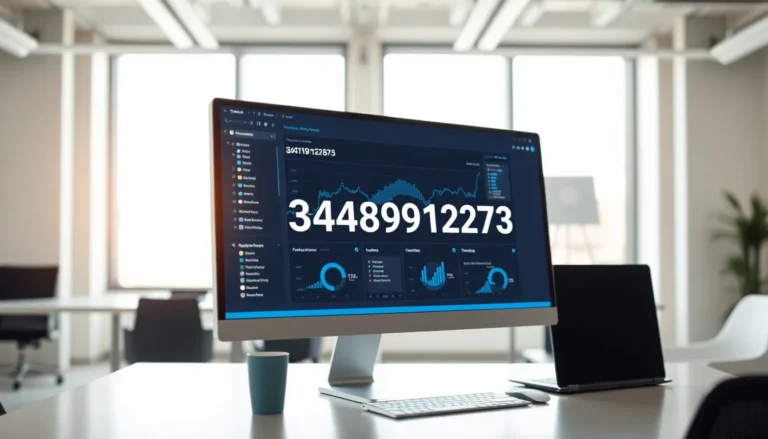In the vast world of acronyms and buzzwords, “BEA” might just be the most charmingly elusive. Is it a new dance move? A trendy coffee blend? Nope! It’s something far more intriguing. Understanding what a BEA is could unlock a treasure trove of knowledge that’s just waiting to be explored.
Table of Contents
ToggleWhat Is a Bea
A BEA commonly refers to a Bureau of Economic Analysis. This U.S. government agency plays a crucial role in providing important economic data. Analysts generate reports about national economic health through various statistics.
Data released by the BEA includes gross domestic product (GDP), trade balance, and personal income. Economists, policymakers, and researchers rely on this information for analyses. The agency also releases regional economic data, helping to evaluate local economies.
Additionally, BEA activities extend to improving the understanding of economic conditions in specific sectors. The agency studies consumer spending trends and inflation rates, offering insights into monetary policy impacts. Various stakeholders utilize this wealth of knowledge for informed decision-making.
Significantly, the analyses from the BEA influence fiscal and economic strategies. Businesses often factor BEA reports into their planning and forecasting.
The importance of BEA data resonates across multiple fields, from finance to education. Researchers frequently cite BEA statistics when analyzing trends over time. Ultimately, the agency contributes extensively to the national conversation about economic progress and challenges.
By highlighting the critical role of BEA, one gains clarity on its impact on daily lives and policy formulation. Understanding what a BEA does demystifies its significance in shaping economic discourse.
Types of Beas

Understanding the different types of BEAs provides insights into their applications and significance. Two main categories exist: Personal BEAs and Professional BEAs.
Personal Beas
Personal BEAs focus on individual economic data that influence personal decision-making. Tracking personal income statistics helps individuals assess their financial health. Changes in spending habits impact personal budgets and savings strategies. Reports on consumer spending trends provide essential information for making informed purchases. Studying personal BEA data can also guide investment choices, especially in fluctuating markets. Individuals often use this information to navigate their finances proactively.
Professional Beas
Professional BEAs cater to organizations, economists, and policymakers by offering essential economic insights. Economic indicators generated by these BEAs shape business strategies and fiscal policies. Analyzing GDP and trade balance informs decision-making and long-term planning. Businesses utilize regional economic data to identify market opportunities and risks. Professional BEAs play a crucial role in formulating economic policies and research initiatives. Their reports guide companies toward strategies that align with economic conditions, ensuring competitiveness in various sectors.
Importance of Beas
Understanding Beas is crucial for interpreting economic dynamics. These entities play significant roles in various contexts, shaping decisions and strategies.
In Social Contexts
Beas influence individuals’ financial decisions by providing insights into personal finance. Personal BEAs help people evaluate economic indicators that reflect their financial health. They assist in budgeting by analyzing income and expenditure patterns. Using this information, individuals can make informed choices about spending and saving. Furthermore, consumer spending trends highlighted by these analyses impact broader economic perceptions. Citizens benefit from understanding inflation rates and price adjustments, which affect daily life.
In Professional Settings
Organizations rely heavily on Professional BEAs for strategic planning. These analyses offer essential data on market trends, enabling businesses to adjust accordingly. Beas guide companies in recognizing new opportunities and associated risks, crucial for maintaining competitiveness. Policymakers use insights derived from these analyses to formulate effective economic policies. By understanding indicators like GDP and trade balances, businesses can forecast economic conditions. Significant trends identified through Professional BEAs inform decisions that affect workforce and investment strategies.
How to Identify a Bea
Identifying a BEA involves recognizing specific data it offers. Personal BEAs present individual financial insights. They compile personal income, savings rates, and inflation impacts on personal budgets. Understanding how these factors affect individual decisions aids in assessing one’s financial health.
Professional BEAs, on the other hand, deliver insights crucial for organizations. They analyze GDP figures, employment rates, and consumer spending patterns. Grasping these components allows businesses to develop strategies that adapt to market fluctuations. Indicators such as business investment levels also contribute to evaluating economic health.
One can locate BEA data through federal websites and economic reports. The Bureau of Economic Analysis regularly publishes comprehensive statistics. Businesses often rely on quarterly and annual reports to monitor economic trends. Economists and policymakers reference these documents to guide their decision-making processes.
Differentiating between personal and professional BEAs requires attention to context. Personal evaluations often depend on factors like credit scores and household expenditures. Meanwhile, professional assessments emphasize larger economic indicators that impact sectors.
Researching reputable sources enhances understanding of BEA data. Academic journals and economic analyses provide valuable perspectives on how BEA insights influence mainstream finance. Consequently, recognizing the origin of BEA data contributes to accurately interpreting its significance in various contexts.
Ultimately, identifying a BEA centers on understanding its data types and sources. Analyzing personal and professional economic indicators empowers individuals and organizations alike to navigate financial landscapes effectively.
Understanding BEAs is essential for grasping economic dynamics in both personal and professional contexts. They provide valuable insights that aid individuals in managing their finances and help organizations formulate effective strategies. By analyzing key economic indicators, both types of BEAs empower users to make informed decisions.
With the wealth of data available from the Bureau of Economic Analysis, individuals and businesses can navigate the complexities of the economy more effectively. Staying informed about economic trends ensures that both personal and professional financial strategies remain relevant and adaptive.








